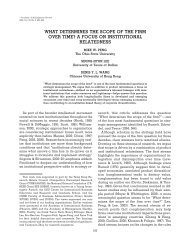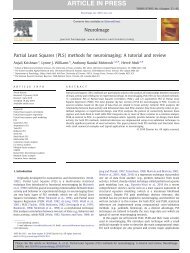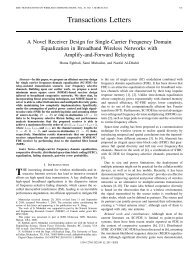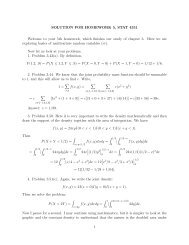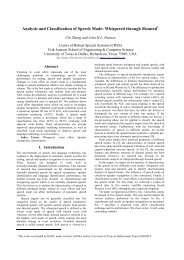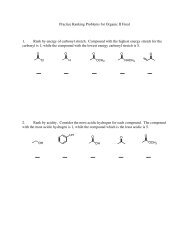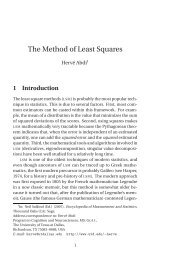SOLUTION FOR HOMEWORK 10, STAT 4351 Welcome to your 10th ...
SOLUTION FOR HOMEWORK 10, STAT 4351 Welcome to your 10th ...
SOLUTION FOR HOMEWORK 10, STAT 4351 Welcome to your 10th ...
You also want an ePaper? Increase the reach of your titles
YUMPU automatically turns print PDFs into web optimized ePapers that Google loves.
Here o λ (1) → 0 as λ → ∞ is a standard mathematical notation “o-small of 1”, and we get<br />
M Z (t) → e −tλ1/2 +tλ 1/2 +(1/2)t 2 = e t2 /2 , λ → ∞.<br />
Because e t2 /2 is the mgf of a standard normal RV, we proved a remarkable result (a version<br />
of the central limit theorem) that Poisson RV converges <strong>to</strong> Normal RV in distribution as<br />
λ → ∞.<br />
8. Problem 6.45. First of all, let us recall that the exponent in a bivariate normal is<br />
1 x − µ 1 ) 2<br />
−<br />
2(1 − ρ 2[<br />
σ 2 1<br />
− 2ρ x − µ 1 y − µ 2<br />
+ (y − µ 2) 2 ]<br />
.<br />
σ 1 σ 2 σ2<br />
2<br />
Now, for the distribution at hand, the exponent is<br />
−(1/<strong>10</strong>2)[(x + 2) 2 − 2.8(x + 2)(y − 1) + 4(y − 1) 2 ].<br />
(a). We need <strong>to</strong> equate the terms. Plainly we get µ 1 = −2, µ 2 = 1, plus three equations<br />
which we should solve as a system:<br />
1<br />
2(1 − ρ 2 )σ 2 1<br />
= 1/<strong>10</strong>2,<br />
2ρ<br />
2(1 − ρ 2 )σ 1 σ 2<br />
= 2.8<br />
<strong>10</strong>2 ,<br />
1<br />
2(1 − ρ 2 )σ 2 2<br />
= 4/<strong>10</strong>2.<br />
Dividing first on the third we get σ 1 = 2σ 2 . The second one gives us 2(1−ρ 2 )σ2 2 /ρ = <strong>10</strong>2/2.8<br />
and combining it with the third we get ρ = .7. Finally, we get σ 2 = 5 and σ 1 = <strong>10</strong>.<br />
(b) We know that (see Theorem 6.9 on page 221)<br />
E(Y |X = x) = µ 2 + ρσ 2 σ −1<br />
1 (x − µ 1).<br />
Plug-in numbers and get the answer.<br />
Similarly,<br />
V ar(Y |X = x) = σ 2 2 (1 − ρ2 ).<br />
Plug-in numbers and get the answer.<br />
9. Problem 6.55. Here X ∼ Exp(θ = 120).<br />
(a)<br />
∫ 24<br />
P(X ≤ 24) = (120) −1 e −t/120 dt = −e −t/120∣ ∣24<br />
0<br />
0 = 1 − e−24/120 = 1 − e −.2 .<br />
(b)<br />
∫ ∞<br />
P(X > 180) = (120) −1 e −t/120 dt = −e −t/120∣ ∣∞<br />
180<br />
180 = e−3/2 .<br />
3



